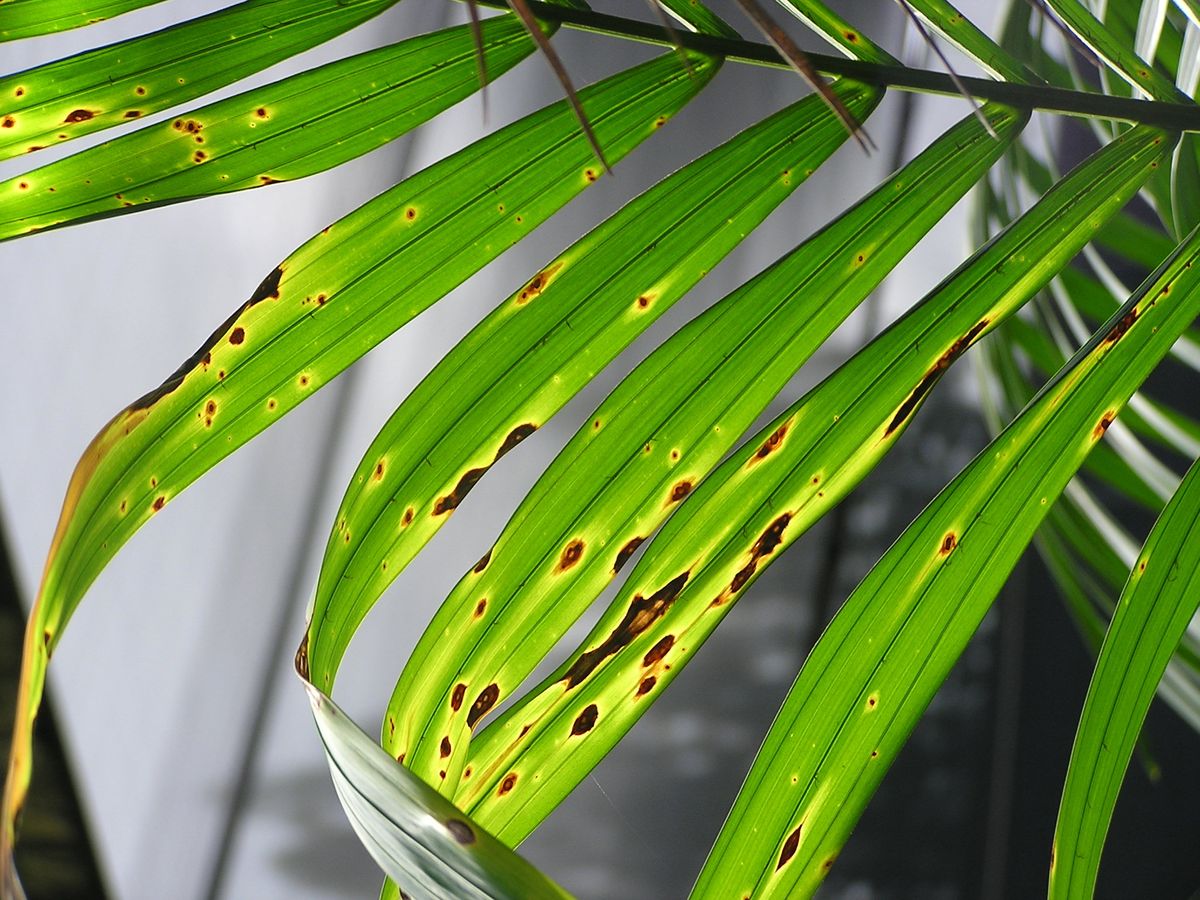Blight on Plants
Blight is a common plant disease that can significantly impact the health and growth of various plant species in your garden. It typically appears as browning and wilting of leaves, as well as damage to stems, flowers, and fruit.

Different types of blight, such as common blight and bacterial blight, can affect a wide range of plants like beans, peas, fruit, and nut trees.
Warm weather conditions, wind, and water can promote the spread of the pathogens causing these diseases.
To protect your plants from blight, it is critical to recognize early symptoms so you can effectively deal with this threat.
The key to controlling blight on plants lies in taking proactive measures, such as implementing proper sanitation practices, using disease-resistant plant varieties, and applying relevant treatments when necessary.
By staying vigilant and informed about blight and its effects, you can prevent the spread of this disease and ensure the prosperity of your garden.
Identifying Blight On Plants
Understanding Plant Blight
Plant blight refers to various diseases affecting plants' leaves, stems, and fruits.
Fungi, bacteria, or viruses typically cause these diseases. The most commonly encountered types of blight include early blight, late blight, and bacterial leaf blight.
Recognizing Blight Symptoms
Blight symptoms can vary depending on the specific pathogen, but infected leaves generally display yellow or brown spots, often called leaf spots.
The affected plant parts may wilt, and it can severely lose its leaves, leading to reduced growth and yield.
Some common types of blight with their specific symptoms include:
- Early blight (Alternaria solani): Dark brown spots with concentric rings, typically found on the lower leaves of tomato and potato plants.
- Late blight (Phytophthora infestans): Large, water-soaked spots on leaves that later turn brown and dry, affecting potatoes and tomatoes.
- Bacterial leaf blight: Affects rice plants with leaf tips turning yellow and eventually white, often surrounded by a narrow brown margin.
Cause And Transmission
Various pathogens, including fungi, bacteria, and viruses, cause plant blight. The pathogens are usually spread through wind, water, or contaminated tools and equipment.
Preventative measures, such as proper sanitation, crop rotation, and resistant plant varieties, are crucial in controlling blight spread.
Disease management can include chemical control, biological control agents, and cultural practices to maintain healthy plants.
Plants Commonly Affected By Blight
Blight commonly affects several plant types, including various crops and vegetables. Some prime examples of plants susceptible to this disease are tomatoes, potatoes, corn, wheat, grass, and soybean.
In this section, you will learn how blight impacts these plants and better understand its potential effects.
Tomatoes and potatoes are particularly vulnerable to late blight caused by the oomycete Phytophthora infestans.
This pathogen causes dark, damp lesions on leaves, stems, and fruit, ultimately leading to the plant's rapid and complete collapse.
Similarly, corn and wheat can be severely impacted by blight: in corn, Northern corn leaf blight caused by the fungus Setosphaeria turcica results in elongated grayish-brown lesions on leaves, whereas wheat is susceptible to Fusarium head blight, which can reduce grain yield and quality.
For other crops like grass and soybean, different types of blight play a significant role in their health.
Brown patch lawn disease, caused by Rhizoctonia solani, damages turfgrass by producing irregular patches of blighted grass in various shades of brown.
Soybean is often affected by Sclerotinia stem rot (also known as "white mold"), a fungus that can cause yield loss and reduction in seed quality.
By recognizing the signs of blight on these plants, you can take steps to control and prevent the spread of this disease in your garden or field.
Preventing Plant Blight
Best Practices in Gardening
Choose resistant varieties of plants to reduce the risk of blight. Practice crop rotation, switching the types of plants grown in a specific area each year.
This helps to prevent the buildup of disease organisms in the soil.
Maintain proper sanitation by removing and disposing of infected plant material and controlling weeds that may host pathogens.
Management and Control Of Blight
Enhance air circulation around your plants by pruning and providing enough spacing between them.
This reduces humidity levels and the likelihood of blight developing.
Water your plants using drip irrigation or at the base of the plant to keep leaves dry, as wet leaves increase the chances of blight infection.
Apply a layer of compost around the plants during the growing season, which helps suppress mold growth and provides essential nutrients.
Chemical and Biological Control
Use fungicides and pesticides to combat and control blight in your garden when necessary.
Follow the instructions on the product label for proper application rates and timing. Some biological control options, like beneficial bacteria, can be used as a chemical alternative.
Always disinfect your gardening tools with bleach and water to minimize the spread of pathogens.
Conclusion
Identifying and controlling this disease is essential when dealing with plant blight.
Start by examining leaves, stems, flowers, and fruit for any signs of browning or wilting.
Remember to take preventive measures like removing infected plant debris, improving air circulation, and using resistant plant varieties.
There are different ways to control blight, whether through cultural methods like pruning and sanitation or organic and chemical treatments.
Whatever method you choose, always follow the proper guidelines for application and care so your plants remain healthy and blight-free.
By understanding the causes of plant blight and taking the proper measures, you, as a gardener, can ensure that your plants stay healthy and vibrant.
Knowledge and diligence are essential to keep plant blight at bay and maintain a successful garden.
Frequently Asked Questions
What are the common symptoms of leaf blight?
Leaf blight symptoms often appear on young leaves and may include browning, wilting, and dark spots or lesions. Affected leaves may also become dry and crumbly. Depending on the type of blight, symptoms could extend to the stems, flowers, and fruit of the plants.
How can blight on plants be prevented?
To prevent blight on plants, maintain good hygiene in your garden by removing plant debris and fallen leaves. Ensure proper spacing between plants for adequate air circulation and avoid over-watering. Using resistant varieties of plants can also help prevent blight infections.
Is it safe to eat produce affected by blight?
Eating produce affected by blight is generally safe as long as the affected parts are removed. However, consuming fruits and vegetables with visible signs of infection, such as mold, decay, or discoloration, is not recommended. Always wash and inspect your produce before consumption.
What is the most effective treatment for tomato blight?
The most effective treatment for tomato blight depends on the type of blight affecting the plant. Baking soda spray is a popular organic treatment for some types of blight, while specific fungicides may be recommended for others. Always follow the product label instructions for optimal results.
How do you identify blight disease in plants?
To identify plant blight disease, look for symptoms like brown and wilted leaves, dark spots, or lesions. The presence of mold, decay, or discoloration on fruits and flowers could also indicate blight. If you suspect blight in your plants, consult a local plant expert or agricultural extension office for an accurate diagnosis.
Which pesticide is recommended for controlling blight?
The pesticide recommended for controlling blight depends on the blight affecting your plants. Fungicides, such as copper-based products, are commonly used for fungal blights, while bactericides may be necessary for bacterial blights. Ensure you correctly identify the blight type before selecting a pesticide and follow the label instructions carefully.


